Hard West is a turn based squad tactical strategy game that's been compared to titles like X-COM Enemy Uknown and Jagged Alliance. Stay with me for my thoughts, and as always click an image to see it full size.
Upon firing this game up for the first time and seeing the title screen and menus I was immediately excited to play. This is a game I was looking forward to for a couple of months and I can say that I wasn't disappointed. As the name would imply this is a title that takes place in the wild west, but the twist is the added paranormal element. I'm not talking X-Files here, it's nothing over done. No ghosts and skeletons or aliens, any of that kind of stuff. Instead we're looking curses, cults, and a demon prince. It all fits together very well. By that I mean that even with the paranormal overtones this game still feels like a western... a very dark one. Hell, even the demons are gun slinging cowboys.
I love the music. There are 14 tracks and they're really good at setting the mood and getting stuck in your head. Thankfully they all have a western feel, increasing Hard West's honest feeling about what it is.
So the story of Hard West is pretty linear, but at the same time it's not. Let me explain. When you start a new game you will always play the scenarios in order. After you complete the first scenario you'll unlock a second story with different characters and their respective scenarios. Both of these have to be played linearly but you can skip back and forth between them after each one is completed, allowing a sort of lane change to each story. I can't of course go into explaining any aspect without spoilers...so I won't. Each scenario is a bit different as your characters will evolve and change, as with the mode of progression for completion. See, between the fights there's a secondary mode. In X-COM it was the ant farm, where you built modules for research. In Hard West it's the overworld map mode where you'll be required to complete objectives and explore locations. The player is represented here by a bleached bull's skull. This is also where you'll find stores to purchase items to benefit your characters in the form of weapons, to healing herbs and special relics to improve stats. Often times you'll run into an area where you'll have to make a choice that has a random effect on your main character. Could be great, could be awful, could be nothing, but each decision is final as there are absolutely zero manual saves or loads.
Each scenario is a bit different as your characters will evolve and change, as with the mode of progression for completion. See, between the fights there's a secondary mode. In X-COM it was the ant farm, where you built modules for research. In Hard West it's the overworld map mode where you'll be required to complete objectives and explore locations. The player is represented here by a bleached bull's skull. This is also where you'll find stores to purchase items to benefit your characters in the form of weapons, to healing herbs and special relics to improve stats. Often times you'll run into an area where you'll have to make a choice that has a random effect on your main character. Could be great, could be awful, could be nothing, but each decision is final as there are absolutely zero manual saves or loads.
Each scenario has different objectives to complete while in the secondary mode. One time you may be looking for mining licenses so you can find gold to fund your operations. While another time you may be looking for patents and blueprints so you can research upgrades for weapons and items. Each time a major objective is completed you'll be prompted to go to a location and prepare for a fight. Before we talk about battles, we've got to look at character movement and discuss action points. This is the same standard movement system as other titles like this one. You'll select a character and see your two stage highlighted area. Movement anywhere within the first stage will cost one action point, and anywhere in the second stage will cost a second action point. All characters have two action points during combat to spend per turn and they're represented by the stars next to the health gauge displayed above their head. We'll talk about different ways they're spent further in.
Before we talk about battles, we've got to look at character movement and discuss action points. This is the same standard movement system as other titles like this one. You'll select a character and see your two stage highlighted area. Movement anywhere within the first stage will cost one action point, and anywhere in the second stage will cost a second action point. All characters have two action points during combat to spend per turn and they're represented by the stars next to the health gauge displayed above their head. We'll talk about different ways they're spent further in. Now we can discuss the extensive combat system in Hard West, in fact that's where most of our focus from here out will be. First and foremost, it can be pretty challenging, you'll need to use the environment to your advantage to make it through combat missions. Cover is available to hide behind and is not destructible. Full and half cover will provide different levels of protection for all characters to the tune of significant damage reduction. So maybe your gun does five damage, well against full cover it will most likely only hit for one damage. If a character is flanked the cover bonus is negated by the flanker allowing them to hit for full damage. Another interesting mechanic is the use of interactive items available in the field. Let's say there's a big crate near a posse member and by itself it provides half cover, but open its flimsy half inch pinewood lid and now you've got full protection. Of course all types are helpful in terms of line of sight, but that won't always save you.
Now we can discuss the extensive combat system in Hard West, in fact that's where most of our focus from here out will be. First and foremost, it can be pretty challenging, you'll need to use the environment to your advantage to make it through combat missions. Cover is available to hide behind and is not destructible. Full and half cover will provide different levels of protection for all characters to the tune of significant damage reduction. So maybe your gun does five damage, well against full cover it will most likely only hit for one damage. If a character is flanked the cover bonus is negated by the flanker allowing them to hit for full damage. Another interesting mechanic is the use of interactive items available in the field. Let's say there's a big crate near a posse member and by itself it provides half cover, but open its flimsy half inch pinewood lid and now you've got full protection. Of course all types are helpful in terms of line of sight, but that won't always save you.  Tents for instance, will block line of sight but are not at all good at stopping bullets. If it's day time you may see a shadow that gives away an enemy position. This will allow a character to be targeted and shot at through the tent even without a direct line of sight, but will invoke an aim penalty that will reduce your chance to hit. Yes, even the time of day itself has an effect on combat and abilities; this -is- predetermined however: there is no day/night cycle. The image below explains those effects.
Tents for instance, will block line of sight but are not at all good at stopping bullets. If it's day time you may see a shadow that gives away an enemy position. This will allow a character to be targeted and shot at through the tent even without a direct line of sight, but will invoke an aim penalty that will reduce your chance to hit. Yes, even the time of day itself has an effect on combat and abilities; this -is- predetermined however: there is no day/night cycle. The image below explains those effects. Then there are ricochets. This is one of the coolest ways to get around cover. All characters share sight. So let's say you've got a set up where one of your posse is posted behind a rail at a building to the south. Directly north is another building with an enemy posted behind it, out of that member's line of sight. Another of your posse runs to the north building and posts up on a corner with the ability to see that enemy. This enemy's location is now shared with your posse member to the south, but there's still no direct line of sight to set up a shot. Now let's say this north building happens to be a blacksmith and there's an anvil outside. Your southern member no longer needs line of sight, just the ability to ricochet a shot off the anvil around the building to bury a piece of hot lead in his left buttock. Even cooler is that ricochets can bounce off multiple applicable surfaces allowing for some amazing trick shots. In the image below we can see the highlighted character preparing to ricochet from the bell to the cauldron to NPC behind the tree.
Then there are ricochets. This is one of the coolest ways to get around cover. All characters share sight. So let's say you've got a set up where one of your posse is posted behind a rail at a building to the south. Directly north is another building with an enemy posted behind it, out of that member's line of sight. Another of your posse runs to the north building and posts up on a corner with the ability to see that enemy. This enemy's location is now shared with your posse member to the south, but there's still no direct line of sight to set up a shot. Now let's say this north building happens to be a blacksmith and there's an anvil outside. Your southern member no longer needs line of sight, just the ability to ricochet a shot off the anvil around the building to bury a piece of hot lead in his left buttock. Even cooler is that ricochets can bounce off multiple applicable surfaces allowing for some amazing trick shots. In the image below we can see the highlighted character preparing to ricochet from the bell to the cauldron to NPC behind the tree. Hard West uses a character's hit percentages modified by their aim to determine whether a shot will connect or not: the higher a characters aim the better the hit chance. The tipper here is that all characters have an extra factor in the form of "luck". This is kind of like a secondary health bar and will directly offset the hit modifier by a percentage equal to the hit chance. Abilities also cost luck to use and every character starts with 100 luck by default. So, say an enemy is preparing a shot against one of your posse. Let's give that enemy an arbitrary hit chance of 75%, and say your posse member has 60 luck left in his or her bar. That means this enemy now has only a 15% chance to hit. Now let's say that shot misses your character, his or her luck will now drop by the initial chance to hit but not below zero. So your posse member spent 75 bringing the bar to zero. Their luck has just run out, negating any effect on the next shot made by a different enemy that just happens to hit this time. Ok, your posse member just took a bullet. Not good. But now that character regains a portion of luck reducing the chance of taking another shot right away, and helping to maintain the balance of this very deep combat system. In this image below you can see that the NPC marked with an arrow has just missed the highlighted character by the window, causing him to require a change of pants and decreasing his luck by 25.
Hard West uses a character's hit percentages modified by their aim to determine whether a shot will connect or not: the higher a characters aim the better the hit chance. The tipper here is that all characters have an extra factor in the form of "luck". This is kind of like a secondary health bar and will directly offset the hit modifier by a percentage equal to the hit chance. Abilities also cost luck to use and every character starts with 100 luck by default. So, say an enemy is preparing a shot against one of your posse. Let's give that enemy an arbitrary hit chance of 75%, and say your posse member has 60 luck left in his or her bar. That means this enemy now has only a 15% chance to hit. Now let's say that shot misses your character, his or her luck will now drop by the initial chance to hit but not below zero. So your posse member spent 75 bringing the bar to zero. Their luck has just run out, negating any effect on the next shot made by a different enemy that just happens to hit this time. Ok, your posse member just took a bullet. Not good. But now that character regains a portion of luck reducing the chance of taking another shot right away, and helping to maintain the balance of this very deep combat system. In this image below you can see that the NPC marked with an arrow has just missed the highlighted character by the window, causing him to require a change of pants and decreasing his luck by 25. Of course during combat your posse members may be injured. This only happens if you've turned on combat injuries at the start of the scenario, but it's a double edged sword. Being badly hurt -will- hobble your character for a while. But if they survive... those wounds will have a largely positively effect. Below, in this image you can see a posse member that was severely wounded but managed to power through, and is all the better for it.
Of course during combat your posse members may be injured. This only happens if you've turned on combat injuries at the start of the scenario, but it's a double edged sword. Being badly hurt -will- hobble your character for a while. But if they survive... those wounds will have a largely positively effect. Below, in this image you can see a posse member that was severely wounded but managed to power through, and is all the better for it.  Also viewed in that same image is the character's poker hand. Ability cards will obviously help your posse members in various and nefarious ways and are unlocked by completing missions. Each card has a face value, and the better your cards the better the benefit. This character has only managed to acquire a simple pair. Presumably because his poker face is just terrible, as is the rest of his face. But that pair has given him a pretty good bonus to movement. Each card, as mentioned above, will have effects on the posse member holding that card. Below is yet another image helping explain this. What we see here (in case you're sick of clicking pictures) is the Queen of Diamonds that adds not only to the total hand bonus, but also provides the passive ability "Shadow Cloak" allowing invisibility when not in the sun. The card itself also applies a +2 to character movement all the time.
Also viewed in that same image is the character's poker hand. Ability cards will obviously help your posse members in various and nefarious ways and are unlocked by completing missions. Each card has a face value, and the better your cards the better the benefit. This character has only managed to acquire a simple pair. Presumably because his poker face is just terrible, as is the rest of his face. But that pair has given him a pretty good bonus to movement. Each card, as mentioned above, will have effects on the posse member holding that card. Below is yet another image helping explain this. What we see here (in case you're sick of clicking pictures) is the Queen of Diamonds that adds not only to the total hand bonus, but also provides the passive ability "Shadow Cloak" allowing invisibility when not in the sun. The card itself also applies a +2 to character movement all the time. Weapons are surprisingly varied in Hard West and each has it's strengths and weaknesses. At the bottom of the UI is the range indicator
Weapons are surprisingly varied in Hard West and each has it's strengths and weaknesses. At the bottom of the UI is the range indicator  showing the effectiveness of your currently equipped weapon versus the range of your target. Handguns and shotguns have a short to medium range, rifles a medium to long range, and scoped rifles only a long range. Some weapons use the extreme versions of this modifier. Sawed off shot guns are very close up weapons, and the Elephant Rifle is only effective at a very long distance. You'll incur a significant aim and chance to hit penalty by challenging ranges, so pay attention to that and remember weapon swapping is a free action.
showing the effectiveness of your currently equipped weapon versus the range of your target. Handguns and shotguns have a short to medium range, rifles a medium to long range, and scoped rifles only a long range. Some weapons use the extreme versions of this modifier. Sawed off shot guns are very close up weapons, and the Elephant Rifle is only effective at a very long distance. You'll incur a significant aim and chance to hit penalty by challenging ranges, so pay attention to that and remember weapon swapping is a free action. Most characters will start with a standard six shooter. You'll also be able to purchase or find secondary weapons at traders and after completing missions respectively. Soon, gun variations will become apparent. For instance a Derringer only does three damage, but it will allow two shots per turn as long as you have the action points, it takes one per shot. So it has the potential of doing up to six damage per turn. The downside of a Derringer is of course its very short effective range and the fact that it only has two ammunition. Scoped rifles have only one ammunition and are only effective at long range, but happen to be very powerful. With both action points and some luck left a character can use its "Scoped Shot" ability. This will allow a 100% chance to hit whoever is targeted, but has a three turn cool down. So no moving or reloading before firing.
Most characters will start with a standard six shooter. You'll also be able to purchase or find secondary weapons at traders and after completing missions respectively. Soon, gun variations will become apparent. For instance a Derringer only does three damage, but it will allow two shots per turn as long as you have the action points, it takes one per shot. So it has the potential of doing up to six damage per turn. The downside of a Derringer is of course its very short effective range and the fact that it only has two ammunition. Scoped rifles have only one ammunition and are only effective at long range, but happen to be very powerful. With both action points and some luck left a character can use its "Scoped Shot" ability. This will allow a 100% chance to hit whoever is targeted, but has a three turn cool down. So no moving or reloading before firing.
Which brings me from a graceful and not at all obvious segway to the subject of reloading. Each time you fire a weapon you'll deplete its ammo...derp. This means after a bit of firing you'll need to replenish ammunition, costing one action point. On top of that your character may not be able to totally refill their ammo, often only two or three rounds at once. Get a weapon's ammo too low and it may disallow some abilities. Example: lots of pistols allow an ability called Fanning. This is where the character will hip fire their pistol as seen in pretty much any spaghetti western, firing three shots in quick succession. So the ability requires at least three ammo in the weapon or it won't work. Also worth noting here is that it only takes one action point to fire any weapon, but doing so will -always- end a character's turn. Graphics in Hard West, though not the best ever seen in a title like this, are pretty nice to look at. Some of the design might seem a little generic at first, but it's really got its own flavor the more you see it. Lighting is nice, animations are simple but smooth and the ability to rotate the map 360 degrees will give you a full view of the field.
Graphics in Hard West, though not the best ever seen in a title like this, are pretty nice to look at. Some of the design might seem a little generic at first, but it's really got its own flavor the more you see it. Lighting is nice, animations are simple but smooth and the ability to rotate the map 360 degrees will give you a full view of the field.
The UI at first feels a little confusing, but once you play a mission or two you'll learn it. There are still problems though, like not being able to hover over a skill during combat to see a description. You'll have to open your character screen to see them. There's also no obvious way to cancel a selection once made and can cause some frustrating mistakes. This is done by right clicking off the current panel or hitting escape. That range modifier bar I mentioned further up can also be tricky to follow since it's linked to the mouse pointer. Meaning wherever you drag the mouse that bar will show the range modification. Just some small stuff really, it's very functional for the most part and a lot simpler than it seems at first.
If I had to make complaints it's going to be these items: Sounds and the overall optimisation of the game. Also characters aren't -that- memorable. And the lack of varying 3D weapon models.
First off: sounds seem a little weak. Not bad at all mind you, just not exceptionally powerful. Is this terrible? No it isn't, the game's still awesome.
Second, Hard West is not consistent at all in its frame rate. Though this isn't horrible either, as there isn't a ton of motion that requires a perfect 60 fps. Still it would be nice to see that addressed since it does seem that this title is a bit CPU heavy and that's noticeable on the temperature gauge. During a session I played one morning my home temperature was 58°F, or around 14°C. I noticed my CPU clocking in at 115°F, or 46°C. Seems pretty warm in general, I don't like seeing much above 42°C myself; and it's definitely high for a room temp that low. Especially since I'm using one of these coolers. Luckily the devs have been putting out patches regularly as needed, so it may be fixed sooner than later.
Third, characters are themselves pretty memorable in certain scenarios, but in others you'll find yourself caring less. I don't think it's lack of development that causes that, the overlying story is very interesting. Rather it seems to be the fact that there are several main characters, each with their own stories and it just feels a little tough to follow at times. Admittedly though this issue is probably lessened greatly by not jumping back and forth during scenario selection.
Fourth, the last complaint I have is very trivial and also understandable being as Hard West's budget was pretty limited. But I would have liked to see individual gun models represented on screen during combat instead of just one standard model for each weapon type. There are some really cool designs with the special and unique guns and it would add a lot to the atmosphere being able to see them during play outside of the character screen. Again, this is serious nit-picking. I get that it would have been a bunch more work and cost a lot more money.
Again, this is serious nit-picking. I get that it would have been a bunch more work and cost a lot more money.  Fear not, dear readers. The conclusion is at hand! Hard West: A tactical squad game with a fairly compelling story and excellent mechanics. Do I recommend it? Yes I do, even though at the time of writing this review I'm not done with my play through. I still have three scenarios left. However I feel confident enough to write about it because it was easy to understand what I was in for from the start. This game didn't get much press, I imagine for budget reasons, and that's too bad really because it's been largely overlooked. I feel that anyone who likes these kinds of titles owes it to themselves to pick it up. Hard West is $20 on Steam and with 40 missions and 8 different scenarios it's worth the cost.
Fear not, dear readers. The conclusion is at hand! Hard West: A tactical squad game with a fairly compelling story and excellent mechanics. Do I recommend it? Yes I do, even though at the time of writing this review I'm not done with my play through. I still have three scenarios left. However I feel confident enough to write about it because it was easy to understand what I was in for from the start. This game didn't get much press, I imagine for budget reasons, and that's too bad really because it's been largely overlooked. I feel that anyone who likes these kinds of titles owes it to themselves to pick it up. Hard West is $20 on Steam and with 40 missions and 8 different scenarios it's worth the cost.
System requirements for Hard West are as follows:
MINIMUM:
OS: Windows Vista/7/8/10
Processor: AMD Athlon(tm) 64 X2 2.6 GHz / Intel Core 2 Quad 2.6 GHz
Memory: 4 GB RAM
Graphics: Radeon HD 4670 (512 MB) / GeForce GT 430 (1024 MB)
DirectX: Version 10
Storage: 6 GB available space
RECOMMENDED:
OS: Windows Vista/7/8/10
Processor: AMD Athlon II X4 3.1 GHz / Intel Core i5 3 GHz
Memory: 6 GB RAM
Graphics: Radeon R7 260X (2 GB) / GeForce GTX 550 Ti (1 GB)
DirectX: Version 10
Storage: 6 GB available space
[image credit for pistol fanning
here]

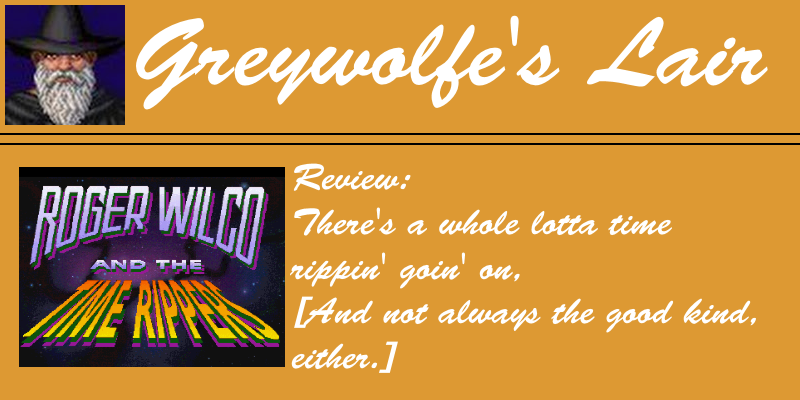
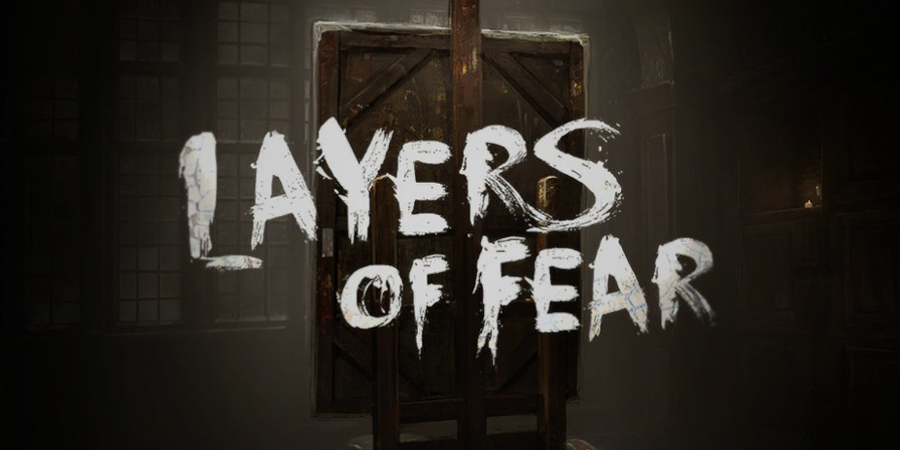
 The Division, Ubisoft’s latest open world extravaganza launched yesterday and we are finally sinking our teeth into the gameplay experience. Ubisoft decided to not release the game to the press early with the logic being this is a multi-player experience and without adequately populated servers it would be hard to judge the quality of the final release product. Originally intended as a full-fledged MMO before being scaled back and given the shaky starts to the last few Ubisoft products that involved large scale online components (The Crew and Assassin’s Creed Unity) this was a risky proposition on their part.
The Division, Ubisoft’s latest open world extravaganza launched yesterday and we are finally sinking our teeth into the gameplay experience. Ubisoft decided to not release the game to the press early with the logic being this is a multi-player experience and without adequately populated servers it would be hard to judge the quality of the final release product. Originally intended as a full-fledged MMO before being scaled back and given the shaky starts to the last few Ubisoft products that involved large scale online components (The Crew and Assassin’s Creed Unity) this was a risky proposition on their part. those thinking this is a small area, the 1 to 1 ratio makes this a rather vast playground which includes landmarks like the Empire State Building, Radio City Music Hall, Times Square and the Flatiron Building as well as neighbourhoods like Chelsea and Hell’s Kitchen. Having recently visited the city the attention to detail in capturing some of these landmarks is amazing. While not perfect it’s still very impressive and truly felt like I was visiting the city not just some generic urban centre. What makes this even more impressive is you have access to much of the complicated and maze like New York subway system as well as the ability to access many of the buildings in the city.
those thinking this is a small area, the 1 to 1 ratio makes this a rather vast playground which includes landmarks like the Empire State Building, Radio City Music Hall, Times Square and the Flatiron Building as well as neighbourhoods like Chelsea and Hell’s Kitchen. Having recently visited the city the attention to detail in capturing some of these landmarks is amazing. While not perfect it’s still very impressive and truly felt like I was visiting the city not just some generic urban centre. What makes this even more impressive is you have access to much of the complicated and maze like New York subway system as well as the ability to access many of the buildings in the city.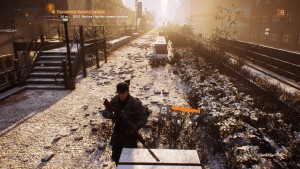 Where the game is failing in these early hours is the one area that they are least able to tweak at this point which is the setting and the story. While the setting of a vibrant and varied city like New York with its near photorealistic representation is visually stunning it also makes for a very grounded in reality game. This means your character model can mix it up with some cool urban threads but at the end of the day he or she is wearing a hat, a scarf, a jacket, a shirt some pants, boots, gloves and a backpack. Hardly the Space Armour of Destiny with its Future filigree and glowy bits. The same applies to your guns, so far aside from a DLC sawed off shotgun that you can use as a sidearm everything seems sort of "generic gun". Yes you can customize and modify the guns with attachments which are reflected in game as well as apply different paint schemes to them but in the end they all blend together without any of the character you find in other games like Destiny or even the Call of Duty games with their over the top character customization and “future weapons” found in the last two entries.
Where the game is failing in these early hours is the one area that they are least able to tweak at this point which is the setting and the story. While the setting of a vibrant and varied city like New York with its near photorealistic representation is visually stunning it also makes for a very grounded in reality game. This means your character model can mix it up with some cool urban threads but at the end of the day he or she is wearing a hat, a scarf, a jacket, a shirt some pants, boots, gloves and a backpack. Hardly the Space Armour of Destiny with its Future filigree and glowy bits. The same applies to your guns, so far aside from a DLC sawed off shotgun that you can use as a sidearm everything seems sort of "generic gun". Yes you can customize and modify the guns with attachments which are reflected in game as well as apply different paint schemes to them but in the end they all blend together without any of the character you find in other games like Destiny or even the Call of Duty games with their over the top character customization and “future weapons” found in the last two entries.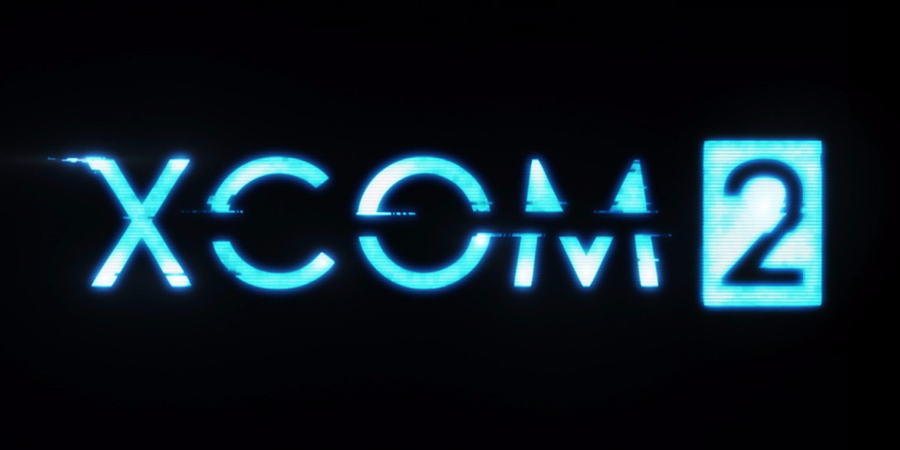
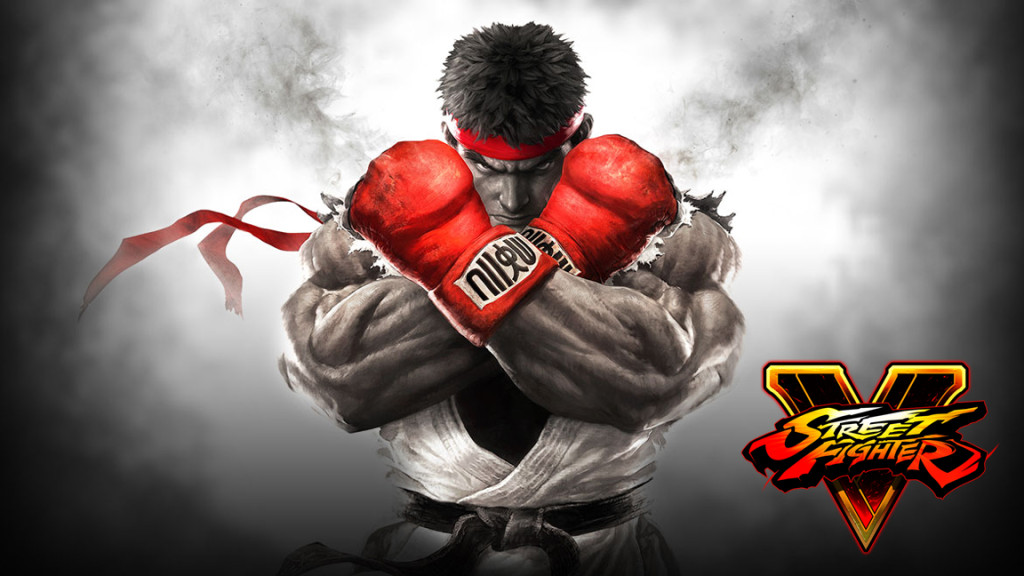

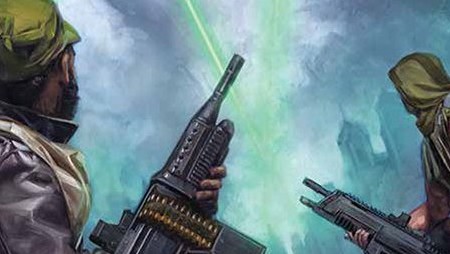
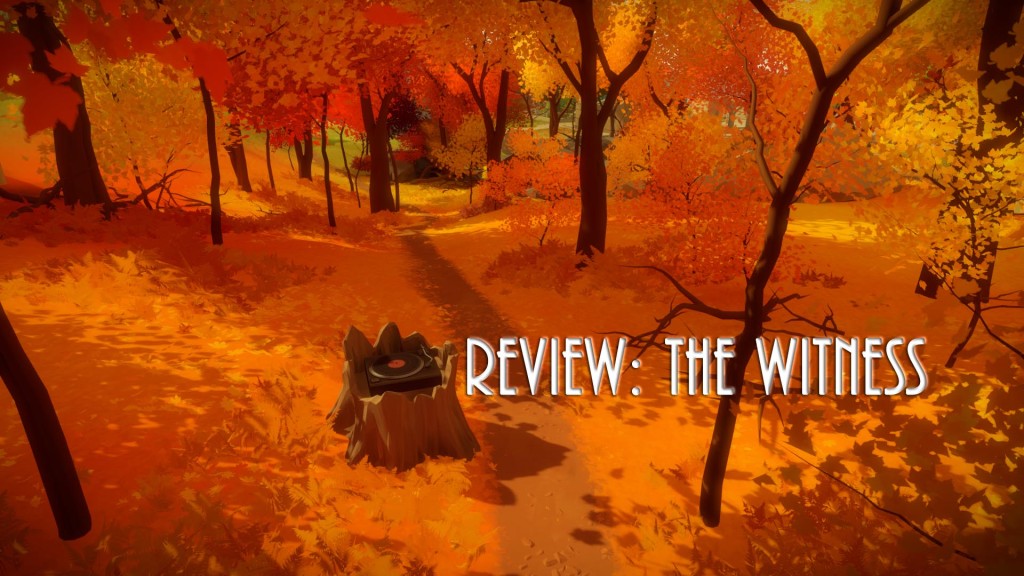

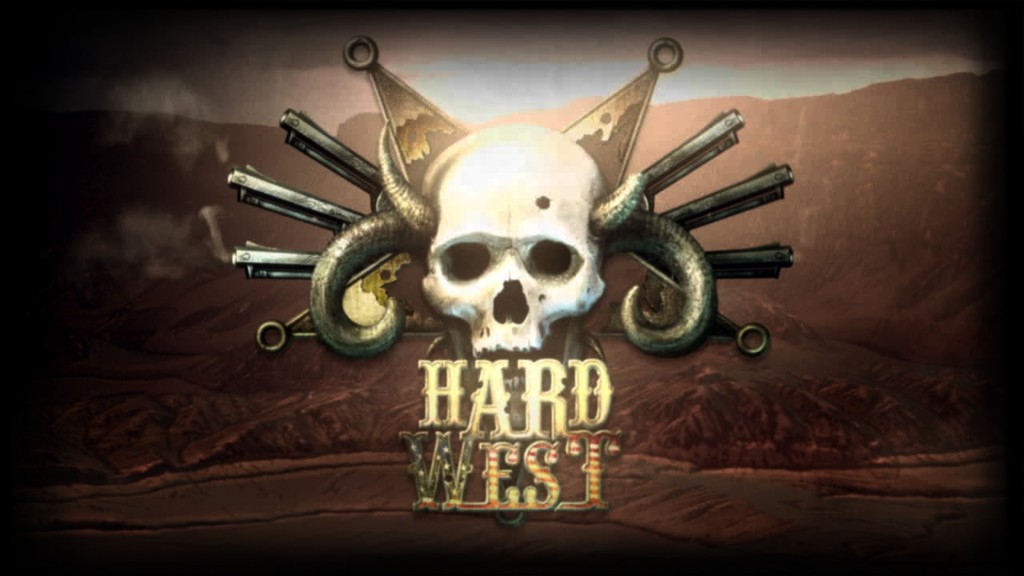









 showing the effectiveness of your currently equipped weapon versus the range of your target. Handguns and shotguns have a short to medium range, rifles a medium to long range, and scoped rifles only a long range. Some weapons use the extreme versions of this modifier. Sawed off shot guns are very close up weapons, and the Elephant Rifle is only effective at a very long distance. You'll incur a significant aim and chance to hit penalty by challenging ranges, so pay attention to that and remember weapon swapping is a free action.
showing the effectiveness of your currently equipped weapon versus the range of your target. Handguns and shotguns have a short to medium range, rifles a medium to long range, and scoped rifles only a long range. Some weapons use the extreme versions of this modifier. Sawed off shot guns are very close up weapons, and the Elephant Rifle is only effective at a very long distance. You'll incur a significant aim and chance to hit penalty by challenging ranges, so pay attention to that and remember weapon swapping is a free action. Most characters will start with a standard six shooter. You'll also be able to purchase or find secondary weapons at traders and after completing missions respectively. Soon, gun variations will become apparent. For instance a Derringer only does three damage, but it will allow two shots per turn as long as you have the action points, it takes one per shot. So it has the potential of doing up to six damage per turn. The downside of a Derringer is of course its very short effective range and the fact that it only has two ammunition. Scoped rifles have only one ammunition and are only effective at long range, but happen to be very powerful. With both action points and some luck left a character can use its "Scoped Shot" ability. This will allow a 100% chance to hit whoever is targeted, but has a three turn cool down. So no moving or reloading before firing.
Most characters will start with a standard six shooter. You'll also be able to purchase or find secondary weapons at traders and after completing missions respectively. Soon, gun variations will become apparent. For instance a Derringer only does three damage, but it will allow two shots per turn as long as you have the action points, it takes one per shot. So it has the potential of doing up to six damage per turn. The downside of a Derringer is of course its very short effective range and the fact that it only has two ammunition. Scoped rifles have only one ammunition and are only effective at long range, but happen to be very powerful. With both action points and some luck left a character can use its "Scoped Shot" ability. This will allow a 100% chance to hit whoever is targeted, but has a three turn cool down. So no moving or reloading before firing. Graphics in Hard West, though not the best ever seen in a title like this, are pretty nice to look at. Some of the design might seem a little generic at first, but it's really got its own flavor the more you see it. Lighting is nice, animations are simple but smooth and the ability to rotate the map 360 degrees will give you a full view of the field.
Graphics in Hard West, though not the best ever seen in a title like this, are pretty nice to look at. Some of the design might seem a little generic at first, but it's really got its own flavor the more you see it. Lighting is nice, animations are simple but smooth and the ability to rotate the map 360 degrees will give you a full view of the field.
